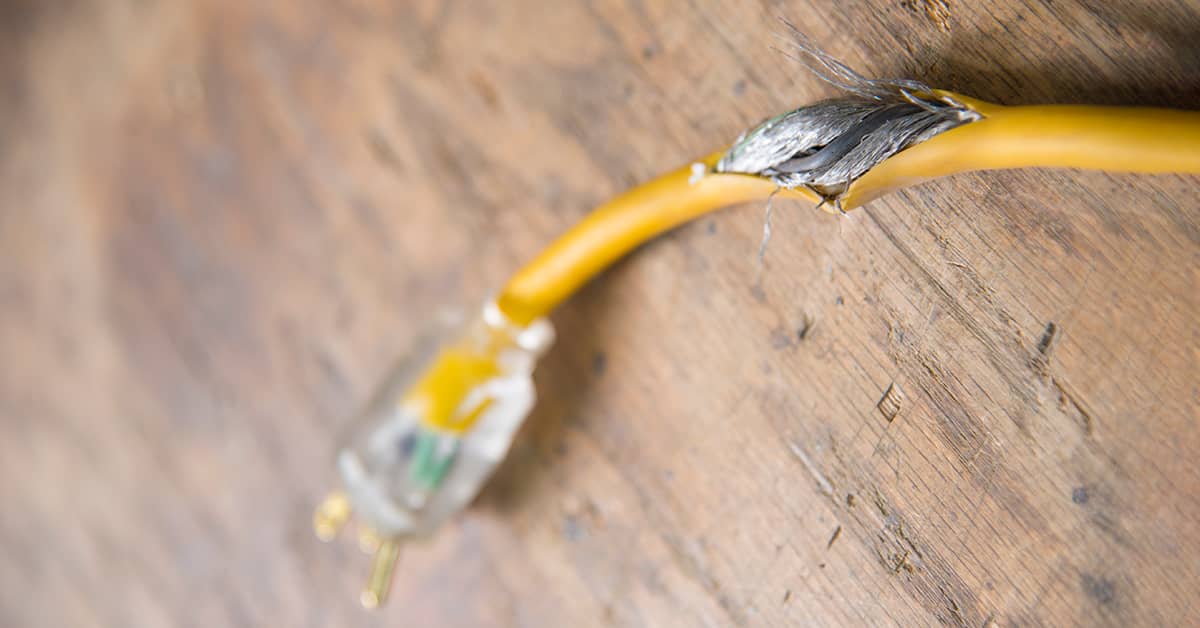Inspect power cords before using tools
Date Posted: 12/13/2021

Employees might use extension cords or power strips when using tools such as drills, or when adding work lights to increase illumination. However, OSHA has a number of safety rules for using these cords and tools, including pre-use inspections and procedures for safe handling.
Portable equipment must be handled in a manner that will not cause damage. Flexible cords on equipment must not be used to carry the tool. Flexible cords may not be hung in a way that could damage the outer jacket or insulation. In addition, flexible power cords or extension cords cannot be routed through walls, windows, ceilings, floors, or similar openings.
Inspect the equipment
Tool cords and extension cords must be visually inspected before use on any shift for defects (such as loose parts or damage) and for evidence of possible internal damage (such as pinched or crushed outer jacket). If a defect or apparent damage is found, the defective or damaged item must be removed from service.
If power strips are available, keep in mind that most are designed for low-powered loads such as computers or audio/video equipment. Power strips are not designed for space heaters or other tools that may exceed the recommended ampere rating.
Repair or replace
Using electrical tape to cover minor nicks and abrasions on a flexible cord is not recommended. According to OSHA, nicks and abrasions which do not completely penetrate the outer jacket of a cord are not a significant safety concern, so repair or replacement is not required. However, if the outer jacket is penetrated or if the conductors or the insulation inside are damaged, then repair or replacement is required. Applying electrical tape can prevent a thorough visual inspection of the cord.
In addition, OSHA warns that removing a damaged section of a flexible cord and installing an attachment plug on the end is not allowed. This would be considered temporary wiring and is not permitted for workplace use.
When looking for electrical equipment, make sure it is listed and labeled by a nationally recognized testing laboratory and is installed as the manufacturer intended. In addition, the equipment must be marked with the manufacturer’s name or trademark, voltage, current, wattage, and/or other necessary information. Use equipment only for purpose intended by manufacturer.
How Safety Management Suite Can Help
OSHA sometimes provides vague requirements such as having employees inspect power cords, but the regulations don’t explain what to look for. Our experts have answered thousands of questions on various topics, and can do the research for you. Just submit your question through the Expert Help tool. The Subject Matter Experts who support the J. J. Keller® SAFETY MANAGEMENT SUITE will provide a response within one business day.
E-mail Newsletter
Sign up to receive the weekly EHS Insider email newsletter for safety articles, news headlines, regulatory alerts, industry events, webcasts, and more.